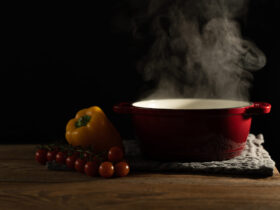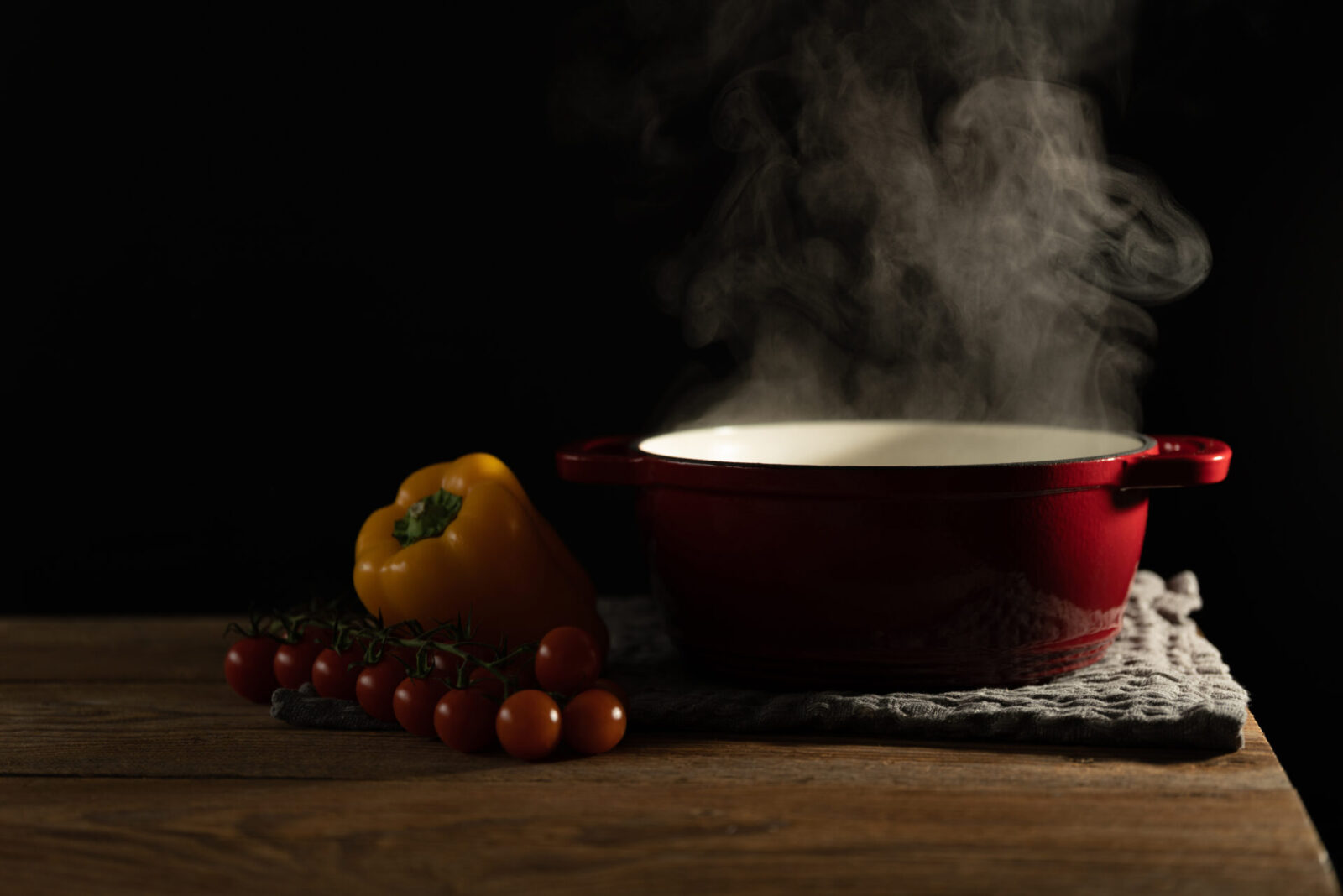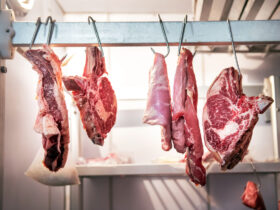Simultaneous Heating and Cooling by Steam
The paradox of steam lies in its dual nature—simultaneously heating and cooling. While theoretically, gaseous water molecules retain more heat than their liquid counterparts, practical application unveils a different narrative. Cooking in saturated steam, typically between 97 and 100 °C, initiates a culinary metamorphosis. Contrary to expectations, the cooking pace doesn’t escalate compared to boiling water. In fact, certain vegetables, like carrots, peas, or romanesco, may require a bit more time to achieve desired tenderness.
The secret lies in the temperature disparity: as gaseous water molecules encounter the cooler food surface, they condense, transitioning back to liquid form. This condensation releases energy, cooling the steam while imparting warmth to the food. Yet, this heat doesn’t indiscriminately penetrate the food. Instead, tiny droplets of condensed water adhere to the food’s uneven surfaces, forming a delicate film – a protective shield against excessive heat. This film acts as a cushion, akin to an air conditioning system, slowing down heat transfer compared to traditional boiling.
The benefits of steaming far outweigh its slightly prolonged cooking times. Through this gentle method, food retains its integrity—shape, color, aroma, and nutritional essence.

Preserving Vitamins and Minerals
In the closed confines of a steaming container, food minimally interacts with boiling water, preserving a plethora of vitamins and minerals. Unlike cooking in excessive liquid, steaming minimizes nutrient loss, particularly water-soluble vitamins like B and C. Moreover, steaming requires no added fats, yet preserves the succulence and vibrancy of foods. Vegetables retain their vivid hues, while meats and fish maintain their juiciness. Far from detracting, steaming enhances natural flavors. Simple seasoning suffices, yet experimenting with liquid aromas—broths or green tea—can elevate dishes. Even slices of oranges, fresh herbs, or root vegetables contribute to the culinary symphony within the steam—a testament to aroma-steaming’s essence.
Ideal Ingredients for Steaming
Delicate ingredients with brief cooking times—fish, fillets, vegetable pieces, potatoes, couscous, or rice—thrive in the steam’s embrace. Dumplings or yeast dumplings reach their zenith in the warm bath of steam.
Pot, Lid, Wire Rack - Essential Tools for traditional Steaming
Steaming, revered in both the East and West, embodies centuries-old traditions. Asian cultures, particularly, have perfected the art, employing stackable bamboo baskets for millennia. Today, steaming’s resurgence in the West speaks volumes of its enduring appeal.
Steaming Inserts: Simple yet Effective
A basic pot with a snug lid suffices, augmented by a wire mesh or perforated metal insert. These inserts prevent food from direct contact with boiling water, offering adaptability across various pot sizes.
Specialized Steaming Pots: Streamlined for Excellence
Dedicated steaming pots operate on similar principles, facilitating uniform cooking by filling them with water and placing a steaming tray inside. The larger surface area ensures even steam distribution, accommodating whole fish or asparagus spears effortlessly.

Bamboo Steamer Baskets: A Time-Honored Tradition
Indispensable in Asian kitchens, bamboo steamer baskets come in diverse sizes and designs, offering flexibility and functionality. Stacked rings with a bottom and lid allow for efficient steam circulation, sealing in flavors and nutrients.
Modern equipment for steaming
The range of modern steam cooking appliances is vast: Some models are limited to steaming alone, while others can also grill, roast, or bake. This is reflected in their size and price.
Steam cookers
Operating a classic, multi-tiered stand-alone steam cooker requires only a power outlet. The water in the bottom tray is heated, and the rising steam flows through the stacked containers, cooking the various foods placed within them. Built-in steam cookers, integrated seamlessly into kitchen units, resemble small ovens. They feature a tank or a fixed water connection. Depending on the manufacturer, the steam generator may be located inside or outside the cooking chamber. An external steam generator allows for more precise control of the cooking process. Most of these devices are programmable. Their main advantage lies in their large cooking space, allowing for the simultaneous cooking of various dishes in larger quantities or entire menus.

Combi steamers

In commercial kitchens, the large stainless steel cabinets with multiple shelves are indispensable. These multi-talented appliances can do almost everything: grilling, roasting, baking, steaming, dehydrating, and keeping food warm. Combi steamers combine moist and dry cooking methods. The proportion of steam and hot air can be precisely controlled. The cooking processes are managed and yield better results than traditional ovens. For example, meat can be seared at high heat and then cooked at low temperature in moist heat (or vice versa), resulting in tender and juicy dishes. Many settings are often pre-set, and complex cooking processes can be started with the push of a button. For private households, smaller versions of these kitchen marvels are available. However, their purchase is only worthwhile for large families or generous hosts, as combi steamers are known to consume a considerable amount of energy.













Leave a Reply
View Comments